 | TODAY IN SCIENCE HISTORY NEWSLETTER - 30 JANUARY |
| Feature for Today |
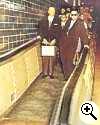 On 30 Jan 1958, the first two-way, moving sidewalk in an American airport was opened in the new terminal building at the city's new municipal airport, Love Field, in Dallas, Texas. Passenger conveyors traveling at the granny-friendly speed of one-and-a-half miles per hour assisted foot traffic for the long walk in each of three concourses from the terminal lobby to the plane ramps. The Today in Science History article on Moving Sidewalks describes it, but the startling fact that a toddler was crushed to death within two years of its operation grabs your attention. Reading how it happened, if you imagine the scene at incident you'll be horrifed. This fatal accident forced a design change to make the next generation of the equipment safer. On 30 Jan 1958, the first two-way, moving sidewalk in an American airport was opened in the new terminal building at the city's new municipal airport, Love Field, in Dallas, Texas. Passenger conveyors traveling at the granny-friendly speed of one-and-a-half miles per hour assisted foot traffic for the long walk in each of three concourses from the terminal lobby to the plane ramps. The Today in Science History article on Moving Sidewalks describes it, but the startling fact that a toddler was crushed to death within two years of its operation grabs your attention. Reading how it happened, if you imagine the scene at incident you'll be horrifed. This fatal accident forced a design change to make the next generation of the equipment safer. The idea of a horizontal people mover has an interesting history. It goes back to the previous century when the first moving sidewalk was featured at the Columbian Exposition, the World's Fair in Chicago in 1893. That was followed by an ambitious installation of a moving sidewalk was at the Paris Exposition of 1900, which set a record that still stands for length and speed of operation. It was 2.1 miles long and connected the principal points of the exhibition. |
| Book of the Day | ||
|
| Quotations for Today | |
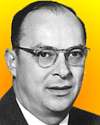 | Science is a field which grows continuously with ever expanding frontiers. Further, it is truly international in scope. � Science is a collaborative effort. The combined results of several people working together is often much more effective than could be that of an individual scientist working alone. - John Bardeen, American physicist (died 30 Jan 1991). |
 | Until we consider animal life to be worthy of the consideration and reverence we bestow upon old books and pictures and historic monuments, there will always be the animal refugee living a precarious life on the edge of extermination, dependent for existence on the charity of a few human beings. - Gerald Malcolm Durrell, British conservationist (died 30 Jan 1995). |
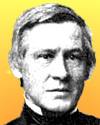 | We have really, that I know of, no philosophical basis for high and low. Moreover, the vegetable kingdom does not culminate, as the animal kingdom does. It is not a kingdom, but a common-wealth; a democracy, and therefore puzzling and unaccountable from the former point of view. |
| Quiz | |
| Before you look at today's web page, see if you can answer some of these questions about the events that happened on this day. Some of the names are very familiar. Others will likely stump you. Tickle your curiosity with these questions, then check your answers on today's web page. | |
| Births | |
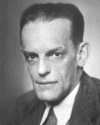 | On 30 Jan 1889, Max Theiler was born, an American microbiologist who won the 1951 Nobel Prize for Physiology or Medicine for his research on a certain tropical disease. Theiler�s discovery that mice are susceptible to this disease facilitated research and eventual development of a vaccine against the disease in humans.  What is the disease that Theiler researched? What is the disease that Theiler researched? |
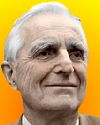 | On 30 Jan 1925, Doug Engelbart was born, an American electrical engineer and inventor who developed the computer graphical user interface. He collaborated in the invention of joystick, track ball and light pen devices, but is best known for a device he made from a block of wood and two wheels. What is Engelbart's most famous creation? What is Engelbart's most famous creation? |
| Deaths | |
 | John Bardeen (1908-1991) was an American physicist who was cowinner of the Nobel Prize for Physics in both 1956 and again in 1972. The 1956 prize was shared for a co-invention he made with William B. Shockley and Walter H. Brattain. What was the invention made by the three winners of the 1956 Nobel Prize in Physics? What was the invention made by the three winners of the 1956 Nobel Prize in Physics? |
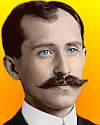 | Orville Wright (1871-1948) made the first ever manned powered flight in an aircraft that he and his brother Wilbur had designed and built together. Where did this first ever manned powered flight take place, and for about how many seconds? Where did this first ever manned powered flight take place, and for about how many seconds? |
| Events | |
 | On 30 Jan of 1998, a new glue, Dermabond, able to replace painful stitches, won the unanimous vote of a medical advisory panel for the Food and Drug Administration. Dermabond can seal off certain wounds quickly, without the need for painful shots, can hold a wound closed, sterile and flexible while it is healing. It is the chemical cousin of a certain glue used in households (which is too toxic for medical use). What is the name of the related household glue? What is the name of the related household glue? |
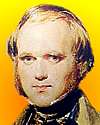 | On 30 Jan 1868, a book by Charles Darwin was published, a follow-up work, written in response to criticisms that his theory of evolution was unsubstantiated. Darwin here supports his views via analysis of various aspects of plant and animal life, including an inventory of varieties and their physical and behavioral characteristics, and an investigation of the impact of a species� surrounding environment and the effect of both natural and forced changes in this environment. What was the name of the book? What was the name of the book? |
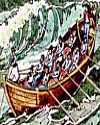 | On 30 Jan 1790, the first of a new design of boat, the Original, was first tested at sea by its English builder, Henry Greathead of South Shields. The Original was 30ft long, twelve oars, self-righting, and had seven hundredweight of cork for buoyancy. What was the special use for this type of boat? What was the special use for this type of boat? |
| Answers |
| When you have your answers ready to all the questions above, you'll find all the information to check them, and more, on the January 30 web page of Today in Science History. Or, try this link first for just the brief answers. Fast answers for the previous newsletter for January 29: electromagnetic force • comparison of mineral hardness • directly from nitrogen and hydrogen gases • manganese (from ferro-manganese, or spiegeleisen ore) • decade including the year 1896 • DDT • ice cream cone. |
| Feedback |
 If you enjoy this newsletter, the website, or wish to offer encouragement or ideas, please send feedback by using your mail reader Reply button. If you enjoy this newsletter, the website, or wish to offer encouragement or ideas, please send feedback by using your mail reader Reply button. Your click on a StumbleUpon, Google+ or Facebook social button on the site webpages is also a welcome sign of appreciation. Thank you for using them. |
| Copyright |
| To find citations for quotations go to the corresponding webpage by clicking on the “quotes” balloon icon. Sources for the thumbnails appear on today's webpage with the corresponding item. � This newsletter is copyright 2014 by todayinsci.com. Please respect the Webmaster's wishes and do not put copies online of the Newsletter � or any Today in Science History webpage. (If you already have done so, please remove them. Thank you.) Offline use in education is encouraged such as a printout on a bulletin board, or projected for classroom viewing. Online, descriptive links to our pages are welcomed, as these will provide a reader with the most recent revisions, additions and/or corrections of a webpage. For any other copyright questions, please contact the Webmaster by using your mail reader Reply button. |
--
If you do not want to receive any more newsletters, Unsubscribe
To update your preferences and to unsubscribe visit this link


Δεν υπάρχουν σχόλια:
Δημοσίευση σχολίου